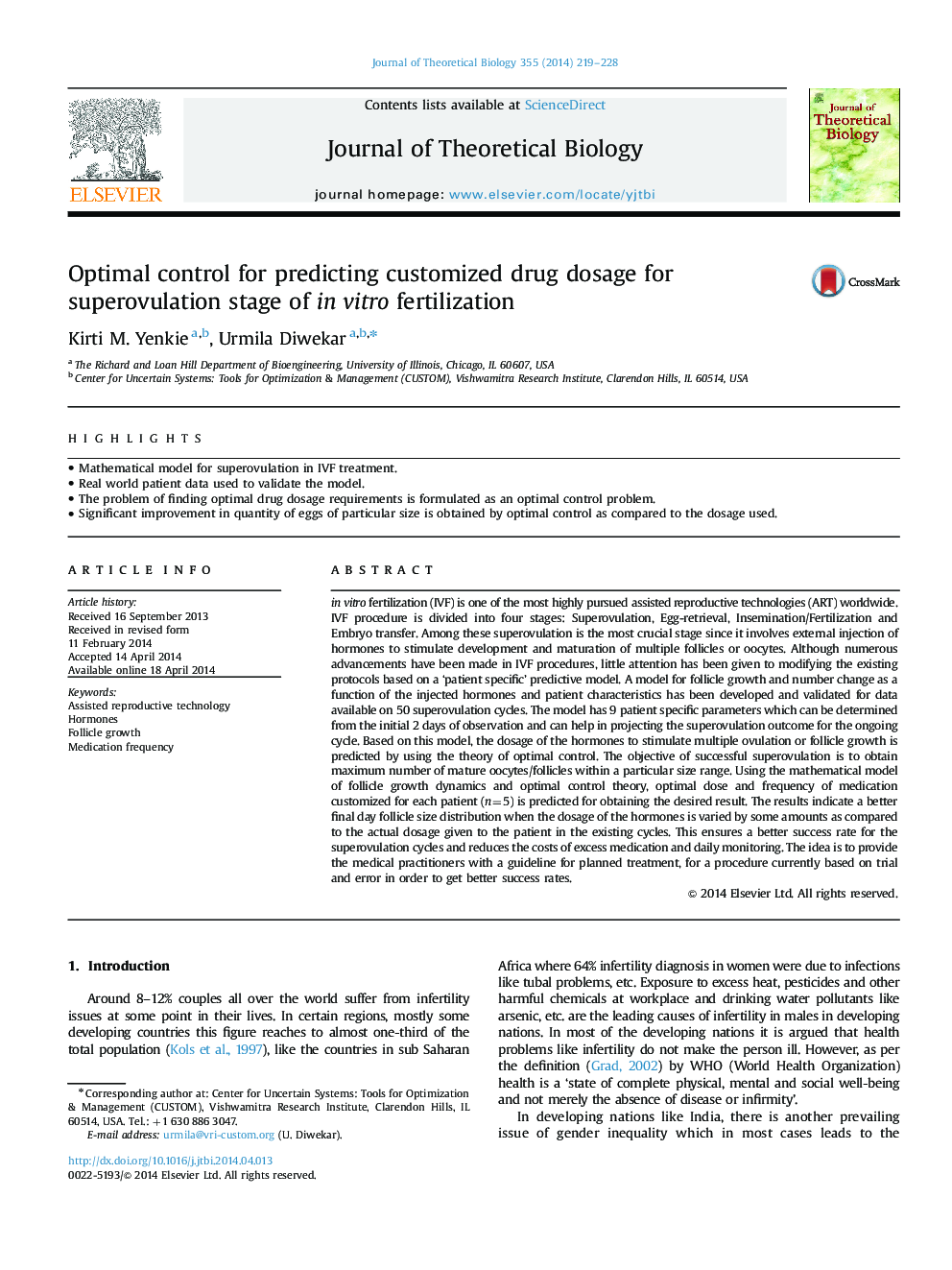| Article ID | Journal | Published Year | Pages | File Type |
|---|---|---|---|---|
| 6370518 | Journal of Theoretical Biology | 2014 | 10 Pages |
â¢Mathematical model for superovulation in IVF treatment.â¢Real world patient data used to validate the model.â¢The problem of finding optimal drug dosage requirements is formulated as an optimal control problem.â¢Significant improvement in quantity of eggs of particular size is obtained by optimal control as compared to the dosage used.
in vitro fertilization (IVF) is one of the most highly pursued assisted reproductive technologies (ART) worldwide. IVF procedure is divided into four stages: Superovulation, Egg-retrieval, Insemination/Fertilization and Embryo transfer. Among these superovulation is the most crucial stage since it involves external injection of hormones to stimulate development and maturation of multiple follicles or oocytes. Although numerous advancements have been made in IVF procedures, little attention has been given to modifying the existing protocols based on a 'patient specific' predictive model. A model for follicle growth and number change as a function of the injected hormones and patient characteristics has been developed and validated for data available on 50 superovulation cycles. The model has 9 patient specific parameters which can be determined from the initial 2 days of observation and can help in projecting the superovulation outcome for the ongoing cycle. Based on this model, the dosage of the hormones to stimulate multiple ovulation or follicle growth is predicted by using the theory of optimal control. The objective of successful superovulation is to obtain maximum number of mature oocytes/follicles within a particular size range. Using the mathematical model of follicle growth dynamics and optimal control theory, optimal dose and frequency of medication customized for each patient (n=5) is predicted for obtaining the desired result. The results indicate a better final day follicle size distribution when the dosage of the hormones is varied by some amounts as compared to the actual dosage given to the patient in the existing cycles. This ensures a better success rate for the superovulation cycles and reduces the costs of excess medication and daily monitoring. The idea is to provide the medical practitioners with a guideline for planned treatment, for a procedure currently based on trial and error in order to get better success rates.
